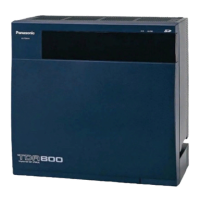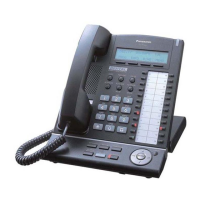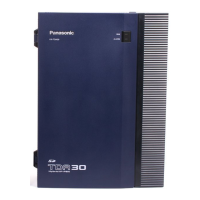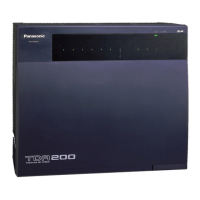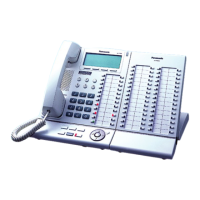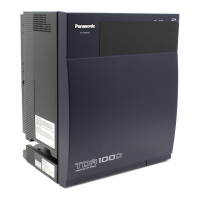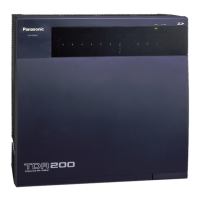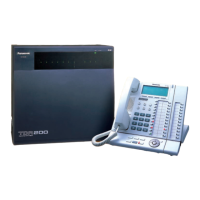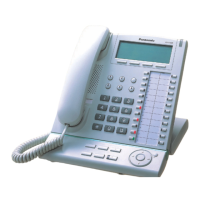1.13 P
256 Feature Manual
[Example]
The leading numbers of extensions accessed through the VoIP network are added as entries to the Quick
Dialing table, in addition to being registered as Other PBX Extension Numbers, as shown below:
[Programming Example]
Number to dial to call an extension at another PBX using VoIP network:
7 (TIE line access number) + 20 (PBX Code) + 1011 (extension number)
Number to dial to call that extension using a public CO line:
9 (CO line access number) + 1-333-123-1011
If the call cannot be completed using the VoIP network, and the dialed leading number is found in the Quick
Dialing Table, the call will be automatically rerouted to a CO line and as specified by the corresponding
destination number.
When a call is made using the VoIP network, if the PBX does not receive a reply from the other PBX within
about 4 seconds of making the call, or an error is returned, the call is rerouted to a public CO line as
specified.
Conditions
• Some QSIG services are available. (→ 1.13.18 PRIVATE NETWORK FEATURES—QSIG)
• Toll Restriction (TRS) settings apply to calls rerouted to public CO lines.
Programming References
PC Programming Manual
2.9.9 [2-6-2] Numbering Plan—Quick Dial—Use quick dial for rerouting to public CO when TIE line does not
work
PT Programming Manual
None
Feature Manual References
1.13.13 PRIVATE NETWORK FEATURES
[Quick Dialing Table]
Quick Dialing No. Destination No.
720 91333123
PBX-1 PBX-2
Extn.1000
Extn.1011
(333-123-1011)
IP-GW IP-GW
Dials
"7-20-1011".
Private IP
Network
Telephone Company
(area code: 222)
Telephone Company
(area code: 333)
PBX code: 20PBX code: 30
1-333-123-1011
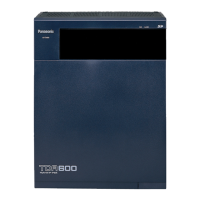
